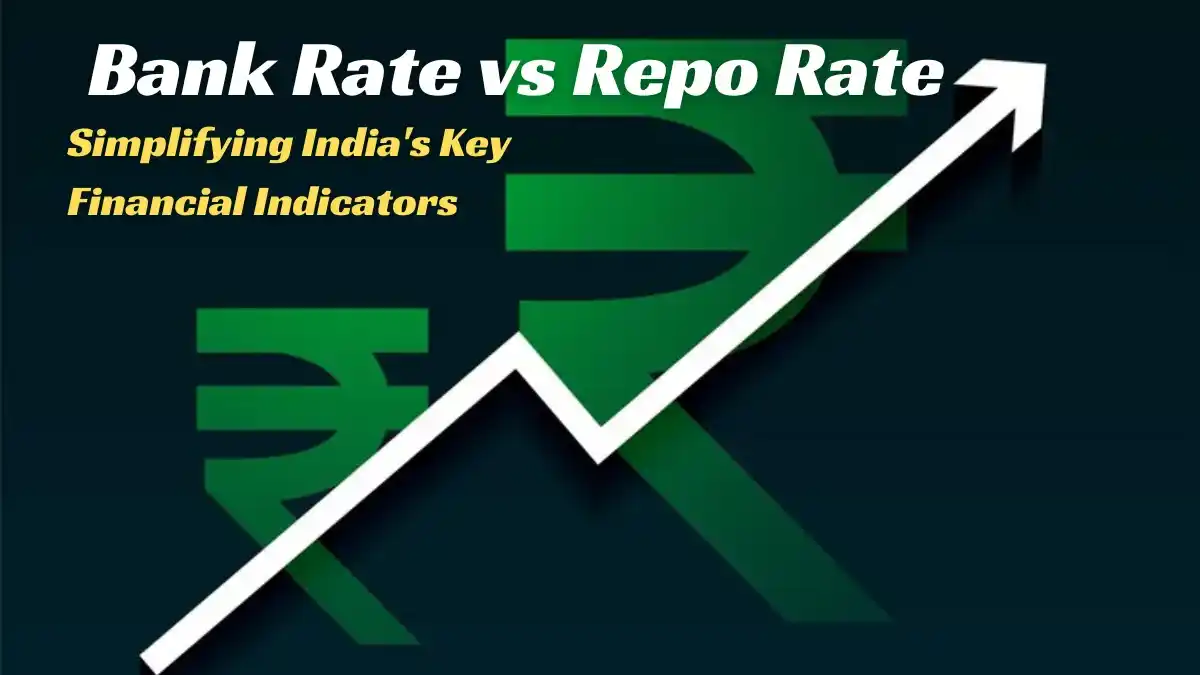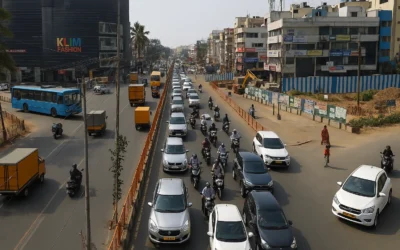When you go into the bank to ask about a loan, the banker says, “We’ll have to adjust the interest on your loan because the repo rate has changed.” “What in the world is a repo rate?” you ask yourself as you stand there, trying not to appear ignorant. The bank rate vs repo rate is likely familiar to you, but the definitions are so ambiguous that you’re unsure of their implications. The truth is that these rates significantly impact the amount you ultimately pay back on loans or accumulate in savings.
Let’s simplify the distinction so that you will understand what is happening the next time you hear them.
What is the Bank Rate vs Repo Rate?
We should first understand the true meanings of these two terms before delving into their differences.
The RBI’s Favourite Lever: The Repo Rate
Short for “repurchase rate,” the repo rate is the interest rate at which the Reserve Bank of India (RBI) extends short-term loans to commercial banks. Banks make government securities available as collateral in exchange. Imagine it as the RBI’s “quick fix” loan that banks take out when they are short on funds.
- Borrowing from the RBI becomes costly when the repo rate is high, and banks pass this expense on to their customers in the form of higher loan interest rates.
- When the repo rate is low, borrowing becomes more affordable, making loans more accessible to both individuals and businesses.
In summary, the repo rate affects the amount you pay for your auto loan, home loan, or credit card-financed shopping spree.
The Big Brother of Interest Rates: The Bank Rate.
The interest rate at which the RBI lends money to commercial banks without requiring collateral is known as the bank rate. In contrast to the repo rate, which is for short-term liquidity, it is a long-term borrowing mechanism.
- A higher bank rate forces banks to raise their lending rates because it makes borrowing from the RBI more costly.
- Banks can provide loans at reduced interest rates because borrowing becomes more affordable when the bank rate is lower.
A nation’s monetary policy is greatly influenced by the bank rate since it deals with long-term funds.
Differences between Bank Rate and Repo Rate
After determining the meanings of these two rates, let’s compare them side by side like two opposing cricket teams:
| Feature | Repo Rate | Bank Rate |
| Definition | The rate at which RBI lends money to banks with collateral (govt securities) | The rate at which RBI lends to banks without collateral |
| Time Period | Short-term loans | Long-term loans |
| Impact | Directly affects short-term borrowing and liquidity in the economy | Influences overall monetary policy and long-term lending rates |
| Collateral Required? | Yes | No |
| Who Decides? | RBI | RBI |
| More Flexible? | Yes, RBI frequently adjusts repo rates | Less frequently changed compared to the repo rate |
Why Should You Care About Bank Rate vs Repo Rate?
Let’s face it, these terms may seem uninteresting to those who are not economists, bankers, or financial geeks. However, they directly affect your life.
This is the reason:
- Purchasing a home? Interest rates on home loans are impacted by changes in repo rates.
- Managing a company? These rates determine how much your business loan will cost.
- Have money saved up? Lower fixed deposit (FD) rates may result from a lower repo rate.
- Is inflation affecting you? To keep inflation under control, the RBI modifies bank and repo rates.
Essentially, the bank rate determines long-term lending policies, whereas the repo rate manages short-term liquidity.
What is the Current Scenario? Bank Rate and Repo Rate
The crucial question now is: what are the current repo and bank rates? Because, let’s face it, being aware of these figures can make you look really intelligent at dinner parties—or at the very least, impress your bank manager.
The Indian bank rate, which coincidentally happens to be the Marginal Standing Facility (MSF) rate, is 6.50% as of February 7, 2025. This is the rate that banks pay when they borrow money from the RBI without providing any collateral, to put it simply.
The current status of other RBI rates is as follows:
- The preferred rate for short-term borrowing is the repo rate, which is 6.25%.
- When banks park their excess cash, the RBI pays the reverse repo rate, which is 3.35%.
- 6.00% is the standing deposit facility rate, which serves as a sort of contingency measure to control liquidity.
The RBI adjusts the repo rate based on economic trends, inflation, and occasionally simply to keep banks alert. In India, the current bank rate frequently moves in tandem with the repo rate. Check the RBI’s official website or your preferred financial news source for up-to-date information on the current bank rate and repo rate.
Impact on Real Estate: Home Loan Rates & Housing Market
If you’ve been dreaming about buying a house, these rates matter more than you think! Repo rates and bank rates directly affect home loan interest rates, which can make property buying either affordable or painfully expensive.
- When the repo rate goes up → Banks borrow at a higher cost → Home loan interest rates rise → Your dream home gets pricier.
- When the repo rate goes down → Banks get cheaper funds → Home loan interest rates drop → Buying a house becomes more affordable.
Bank Rate’s Role in Real Estate
The bank rate has a longer-term impact by influencing lending policies generally, but the repo rate has a direct impact on home loan EMIs. A high bank rate indicates that banks are borrowing at exorbitant rates, which raises the cost of all loans, including those for real estate.
To Sum Up
You can visit your bank with confidence now that you have a better understanding of the Bank Rate vs Repo Rate and how they impact your loans.
Knowing how these rates affect home loans and business financing enables you to make better decisions. You might be earning or saving more than you anticipated if you keep an eye on rate changes!




